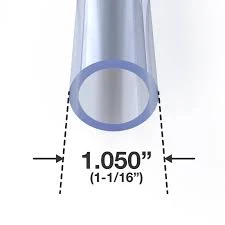Oct . 10, 2024 06:10 Back to list
Gas Pipe Fittings - A Comprehensive Guide to Types and Applications
Understanding Gas Pipe Fittings A Comprehensive Overview
Gas pipe fittings play a crucial role in the safe and efficient distribution of natural gas or propane in residential, commercial, and industrial settings. These fittings enable the seamless connection of pipes, ensuring that gas flows smoothly from the source to various appliances, like stoves, heaters, and barbeque grills. Understanding the types of gas pipe fittings and their applications is essential for anyone involved in plumbing, construction, or home improvement.
Types of Gas Pipe Fittings
Gas pipe fittings come in various shapes and sizes, each designed for specific purposes. Here are some of the most commonly used fittings in gas plumbing
1. Elbows These are used to change the direction of the gas flow in a pipeline. Standard angles for elbows are 45 degrees and 90 degrees, allowing for flexibility in pipe layout to navigate around obstacles.
2. Tees A tee fitting allows for the branching of the gas line. It has three ends one for the main pipeline and two for the secondary lines, enabling gas to flow to multiple appliances from a single source.
3. Couplings These fittings connect two sections of pipe, providing a smooth transition. They are essential when extending gas lines or repairing damaged sections.
4. Adaptors Adaptors are used to connect pipes of different sizes or materials. This is particularly useful when integrating new appliances with existing gas lines that may not match.
5. Caps and Plugs Caps cover the end of a pipe, while plugs block the flow of gas in an open end. They are often used in testing or when a portion of the pipeline is not in use.
6. Valves Gas valves are critical for controlling the flow of gas. Shut-off valves allow users to stop gas flow easily in emergencies or maintenance situations.
gas pipe fittings

Material Selection
The choice of material for gas pipe fittings is also vital. Common materials include
- Steel Durable and strong, steel fittings are often used in high-pressure applications. They can withstand severe conditions and are resistant to corrosion.
- Copper Lightweight and easy to work with, copper fittings are suitable for low-pressure gas lines. They also have good heat resistance.
- Plastic While not as common for gas, certain plastic fittings designed specifically for gas use are available. These can be lighter and less expensive but must meet strict safety regulations.
Safety Considerations
When selecting and installing gas pipe fittings, safety is paramount. Proper installation must adhere to local codes and standards to prevent leaks that can lead to hazardous conditions. Here are a few safety tips
- Always ensure fittings are compatible with the type of gas being used. - Regularly inspect gas lines and fittings for signs of wear or leaks. - Use appropriate sealants where necessary, but avoid using any products not rated for gas applications.
Conclusion
Gas pipe fittings are essential for the safe and effective distribution of gas in various applications. Familiarity with the types of fittings available and their appropriate use can enhance the reliability of gas systems and improve overall safety. Whether for a DIY project or professional installation, understanding gas pipe fittings is vital for ensuring that gas systems operate smoothly and efficiently. Remember, when in doubt, consult a licensed professional to guarantee compliance with safety regulations and standards.
-
Premium PVC-M Water Supply Pipe - Durable & Efficient
NewsAug.02,2025
-
Premium PP Welding Rod: GPT-4 Turbo Enhanced
NewsAug.01,2025
-
HDPE Drainage & Irrigation Pipe - Durable, Efficient Solutions
NewsAug.01,2025
-
Premium PVC Transparent Pipe: Durable & Clear Solutions
NewsJul.31,2025
-
High-Quality UPVC Electrical Pipe for Safe Wiring Solutions
NewsJul.30,2025
-
Premium PVC Pipe Fitting Supplier – Durable & Leak-Proof Solutions
NewsJul.30,2025

